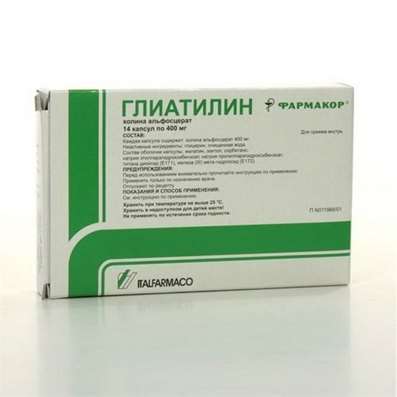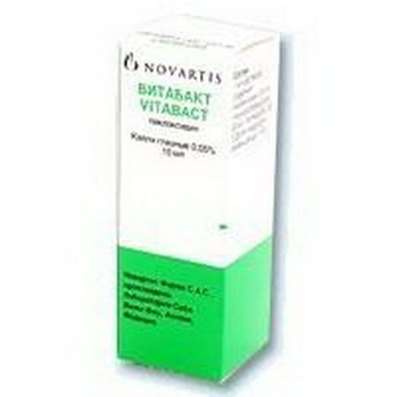The study of signaling substances and membrane proteins - a key part of understanding how the body works
22 Oct 2016
Biophysicist talks about membrane proteins, the difficulties of their crystallization and role in the treatment of severe diseases. We spoke with the head of the Laboratory of Advanced Research membrane proteins MIPT Professor Georg Byuldt.
Before receiving a PhD, I was engaged only in physics, but after moved to biology, in a very good institute in Basel (Switzerland), Center of Biological Research, University of Basel. When you come from physics in a completely new field - biology, you have difficulty with the understanding of colleagues, all what you do, is new to you. I started with the study of lipid membranes, which then was not known structure. After some time I realized that this is the direction I is not that interesting, and just then I met a man who later became a friend of mine who told me of membrane proteins.
The role of membrane proteins in the human body
When scientists discovered cells, at the same time we found that they are surrounded by a kind of wall, which, as it turned out later, is made up of lipids and proteins. The importance of the study of proteins in the membrane wall, became apparent immediately. Within 70 years, scientists isolated one after another and examined these proteins.
Intercellular communication, as well as transmission of information within the body as a whole, made small molecules, such as hormones. These hormones bind with proteins is in the membrane, or they can not influence the behavior of the cell. Immediately it became clear that to know the structure and function of these proteins is very useful, since it is directly related to health in general to understand the processes occurring in our body. Special organs, such as brain secrete hormones that interact with cells sent, in turn, signals to the brain. That is, this system works in both directions. Therefore, the study of signaling substances and membrane proteins is a key part of understanding the body work.
Now everybody discuss the impact of Meldonium to restore the balance between oxygen supply and demand in cells.
The first membrane protein that I was interested in was bacteriorhodopsin archaea. At that time, the study of its structure lasted for over 40 years. Then in Basel was coined by the method by which it became easier to crystallize membrane proteins. The first protein, crystallized in a conventional manner, the reaction became a center of photosynthetic bacteria. It crystallized Hartmut Michel, won a Nobel Prize. New same method invented by Jürg Rosenbusch, differed from him. Earlier, the proteins dissolved in Unlike membrane detergent. Rosenbusch also came up with the crystallization method directly in the membrane. Over time, this method has been very successful. For example, a conjugated structure with G-protein coupled receptor (GPCR) was identified from MIPT Vadim Cherezovs this method.
Membrane proteins, among other things, I am interested also because physics is to engage the structure definition, as in these studies it can apply the methods of physics. By studying membrane proteins, I realized that they carry out a very interesting feature, so also became engaged in spectroscopy. Then I found out that these proteins play a very important role in the communication and transfer of materials that led me to the study of membrane proteins in the context of the entire cell. Most recently, I decided to find out how to transfer signals in the cell and how proteins are transported, for example, into the mitochondrial matrix.
On difficulties with the protein crystallization
Studies at MIPT, we began to study the structure and function of membrane proteins. The main direction of the laboratory - it is the crystallization of proteins. But we also have the equipment to determine the structure, and we want to see how these proteins work inside cells. For this purpose it was acquired microscope Zeiss worth ˆ 2 million. Usually, microscopic thought of as a compact, handy tool, but it is filled with a variety of microscope devices. This is a truly beautiful machine that can use all the currently available methods for studying cells and other biological problems to solve. In the future, we will use a FT-IR spectroscopy, Raman spectroscopy, cell sorting.
In this laboratory work with solutions. For example, to create a crystal substance, it is necessary to do many operations. It is necessary to isolate the desired gene from the genome, synthesized protein, for example, a cell of a bacterium or yeast, or insect. Cells typically start with E. coli (Escherichia coli) because they are mostly used for the synthesis of proteins. When the pure material, you can proceed to crystallization. Or rather, attempts to obtain a crystal.
The difficulties here are as follows. Modern technologies allow to work with volumes measured in femtolitrah (10-15 l). We have boards with 96 cells, each of which corresponds to one attempt. Then we fill them automatically and get an image that can be viewed on a computer, and we can see, to get the desired result or not. Sometimes you have to use a hundred of these plates, that is to take 10,000 attempts to obtain a crystal, but still not get the result. Thus many attempts necessary because many of the parameters may vary: it is possible to use various surfactants, various buffer solutions, various temperatures - all this leads to a great variety of results. To achieve the desired result, all laboratories in the world have resorted to automate production of proteins crystals.
With the new method of crystallization in the membrane, this process has become a little more complicated. For membrane protein crystallization process is also automated, which was not there before, but it is more complicated than for soluble proteins.
On optogenetics and treating blindness
We've got the results for various retinal-containing proteins, which have been working on for a long time. They have become important in the context of optogenetics. Here one might ask: Why are so many to engage in retinal-containing proteins now? After all, they were important before, as they first tried to crystallize. But now the crystals have been obtained, we know their functions. So why continue to work with them? This is due to the discovery of the possibility of using the retinal-containing proteins to create and manage nerve impulses.
For example, there is a channel protein rhodopsin-2 (Channelrhodopsin-2, chr2), which serves as a channel for the passage of cations through the membrane, but this requires a signal in the form of blue light. In this case, the conformation of the protein is changed, the channel opens and cations can pass through. If you put this system in the nerve cell, it is possible to create a nerve impulse is just a flash of light. there is another protein to interrupt this momentum - galorodopsin (Halorhodopsin), which also belongs to the retinal-containing and is responsible for the transport of chloride ions. The positive charges, which were originally in the cell, you can now compensate for the negative and thus stop the momentum.
Thus, we have the perfect way to create and stopping the nerve impulse. This is one of the ways to use these proteins in optogenetics, research which is now supported by many governments. There have been many predictions that it will for the Nobel Prize this year.
The term in this direction can be obtained by a variety of useful results. Personally, I dream about the treatment of blindness, that is, the destruction of the retina. Are located behind the retina ganglion cell, that can be placed in, for example, these two proteins. Then the nerve impulses that go to the brain appear to be under the influence of light. Perhaps one day these people will have at least a black and white vision.
Another direction - is Parkinson's disease. Now it is trying to heal by introducing electrodes into certain areas of the brain and pulse action through them. Group dedicated to this, there are the Research center of Yulyuh. With the help of light, perhaps it will be possible to do much more efficiently and accurately, because the light can be controlled in a small volume, while the electric pulse applied to a significant portion of the brain.
The world today is developing a number of projects related to optogenetics, so we are also working on this. Also we are looking for other retinal-containing proteins, the structure of which we already know and that can be used in a similar way.
About the study of aging and the prospects for commercialization
Group of Vadim Cherezova trying to crystallize the novel proteins. I mentioned above involved in communication GPCR proteins. They form a plurality of more than 800 receptors, which can be divided into families extent. We would like to know the protein structure of each family, as we hope to be able to get the structures of other proteins with the help of simulation. This requires a lot of time, but it is very important because it is associated with the development of new treatments.
In our group we investigate the proteins that serve as channels for the transfer of substances through the membrane. We are also interested in Valentin Gordeliy on aging. We want to study cell death, aging, and clarify the role of membrane proteins, as well as the entire membrane aging.
In today's world, people usually die from problems such as cancer and heart attacks. But if you do not die from it, then that would be the cause of death? Suppose we cured cancer and heart attacks. What then? Scientists have different ideas on this subject. For example, when you eat, you produce free radicals that can damage DNA. Is this the ultimate cause of death or not? Around the world on these issues, many researchers are working. And since it is related to cell communication, it overlaps with the study of cell membranes.
Commercialization possible for each membrane protein - for participating in the transmission of signals, and those responsible for the transfer of substances, as they are all associated with cell health. For medical purposes it is very important to be able to create substances that interact with these proteins. Moreover, pharmaceutical companies need to improve these agents before medical use. There are great laboratories engaged in obtaining more effective drugs based on existing methods by means of computer. We could do the same. But we have to work with these companies, because when you have a good medicine, but you are running a small institution, it is not enough money to bring it to patients. You must go through many stages of costly clinical trials. Therefore, small institutions such as our work on common problems, and if we find the good stuff, or structure, then sell it a large company or make public, without receiving any money for it. Then the pharmaceutical companies will be able to start production of medicines.
We'll get the protein structure, and they will work with it further developments to pass large pharmaceutical companies, since it is usually in such small companies still do not have enough money to conduct costly tests.

 Cart
Cart





